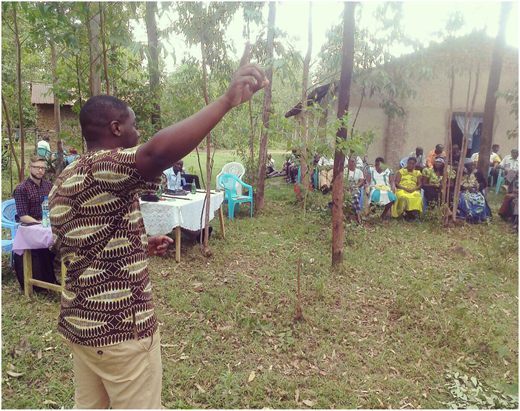Introduction
Sickle cell disease (SCD) is the most common hemoglobinopathy encountered in Kenya. In the western part of the country, about 4.5% of children are born with SCD, and 18% of children are born with sickle cell trait. SCD has contributed significantly to the mortality rate in children younger than age 5 years, primarily because of late diagnosis, educational gaps among service providers, and lack of access to appropriate treatment. Academic Model Providing Access to Healthcare (AMPATH) is part of a collaboration between Moi Teaching and Referral Hospital, Moi University, and Indiana University (including the Indiana Hemophilia and Thrombosis Center). Moi Teaching and Referral Hospital, which operates primarily in the western part of Kenya, has been at the forefront of solving the problem of SCD by partnering with local authorities to help improve comprehensive care for patients with SCD.
Objectives
To improve diagnosis of SCD,
To train clinicians and other health care providers in managing patients with SCD,
To improve access to treatment for people living with SCD, and
To create partnerships with stakeholders involved in caring for people living with SCD.
Methods
Between 2012 and 2019, AMPATH helped start a comprehensive sickle cell care program that was gradually extended to eight other counties in the western part of the country. The five main pillars of the expansion were:
Training and mentoring clinicians in the satellite facilities (Figure 1),
Holding meetings with local authorities to communicate the needs of people with SCD,
Educating patients and families about the importance of timely diagnosis and treatment,
Forming patient support groups for advocacy and facilitating regular meetings twice every year (Figure 2), and
Providing affordable diagnostic services and treatment by setting up a revolving fund and partnering with donors.

Training and mentorship of clinicians during a ward round at Busia County Referral Hospital in western Kenya.

A health care worker giving a talk on sickle cell disease during a support group meeting in western Kenya.
Results
More than 25 000 children were screened for SCD using isoelectric focusing, and of those found to have SCD, approximately 75% have been successfully contacted and started on treatment.
At this time, 1559 clinicians and other health care providers have been trained on how to manage SCD (Table 1).
County authorities have worked together with advocacy groups as well as clinicians in an effort to improve access to care and close gaps in knowledge within communities (Figure 3).
More than 2800 patients with SCD have been examined in hematology clinics (Figures 4, 5, and 6).
Patients have been able to access their medication through donations and a revolving fund set up to subsidize the cost of treatment.
Discussion and conclusion
Although comprehensive care for people with SCD remains a challenge in western Kenya, efforts to improve the situation have been successful. Our experience has highlighted the positive impact of working closely with the affected communities and their leaders to improve awareness and overall care. Political goodwill has yet to transform into meaningful changes in health policy, but with consistent advocacy, change is possible.
We hypothesize that with supportive data to demystify the prevalence and quantify the health care costs associated with SCD, the government may increase its support for SCD care. Further efforts will be focused on creating a registry and evaluating the impact of the disease in Kenyan society through quality-of-life assessments for the patients and their families.
Authorship
Conflict-of-interest disclosure: The authors declare no competing financial interests.
Correspondence: Christopher M. Wanjiku, AMPATH Haematology and Oncology Institute/Moi Teaching and Referral Hospital, AMPATH 4606, Nandi Rd, Eldoret, Kenya; e-mail: chrissmwaniki@gmail.com; and Anne Greist, Indiana University School of Medicine, and Indiana Hemophilia and Thrombosis Center, 8326 Naab Road, Indianapolis, IN 46260; e-mail: agreist@ihtc.org.











